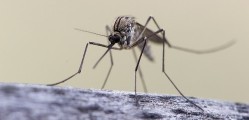
This probably comes as a surprise. After all, organic farmers scorn the pesticides, synthetic fertilizers, and other tools that have become synonymous with high-yield agriculture. Instead, organic farmers depend on raising animals for manure, growing beans, clover, or other nitrogen-fixing legumes, or making compost and other sources of fertilizer that cannot be manufactured in a chemical plant but are instead grown-which consumes land, water, and other resources. (In contrast, producing synthetic fertilizers consumes massive amounts of petroleum.) Since organic farmers can't use synthetic pesticides, one can imagine that their fields suffer from a scourge of crop-munching bugs, fruit-rotting blights, and plant-choking weeds. And because organic farmers depend on rotating crops to help control pest problems, the same field won't grow corn or wheat or some other staple as often.
Jerry Brunetti, an internationally renowned speaker, is the founder of Agri-Dynamics, a company that provides holistic animal remedies for farm, livestock, and pets.
He initially got involved with biological farming while studying animal science, also known as “animal husbandry,” at the University level.
“When I was in college, I saw the industrialization of agriculture accelerating. We were getting away from the Joel Salatin models and getting into the factory farm models because of: a) efficiency –
Labor efficiencies and time efficiencies, and b) subsidies from the federal government that made it worthwhile to lock animals up and feed them concentrates,” he says.What many fail to consider, however, is that purely focusing on production alone isn’t necessarily the most cost effective. Profits are frequently eaten up by increased diesel consumption, combating soil erosion, rising NPK fertilizer costs, and increased need for veterinary drugs to keep livestock healthy in an unnatural and unhealthy environment.
…
More importantly, in the world's poorer nations where most of the world's hungry live, the yield gaps completely disappear. University of Essex researchers Jules Pretty and Rachel Hine looked at over 200 agricultural projects in the developing world that converted to organic and ecological approaches, and found that for all the projects-involving 9 million farms on nearly 30 million hectares-yields increased an average of 93 percent. A seven-year study from Maikaal District in central India involving 1,000 farmers cultivating 3,200 hectares found that average yields for cotton, wheat, chili, and soy were as much as 20 percent higher on the organic farms than on nearby conventionally managed ones. Farmers and agricultural scientists attributed the higher yields in this dry region to the emphasis on cover crops, compost, manure, and other practices that increased organic matter (which helps retain water) in the soils. A study from Kenya found that while organic farmers in “high-potential areas” (those with above-average rainfall and high soil quality) had lower maize yields than nonorganic farmers, organic farmers in areas with poorer resource endowments consistently outyielded conventional growers. (In both regions, organic farmers had higher net profits, return on capital, and return on labor.)
Contrary to critics who jibe that it's going back to farming like our grandfathers did or that most of Africa already farms organically and it can't do the job, organic farming is a sophisticated combination of old wisdom and modern ecological innovations that help harness the yield-boosting effects of nutrient cycles, beneficial insects, and crop synergies. It's heavily dependent on technology-just not the technology that comes out of a chemical plant.
Please Read this Article at Articles.Mercola.com





Leave a Reply